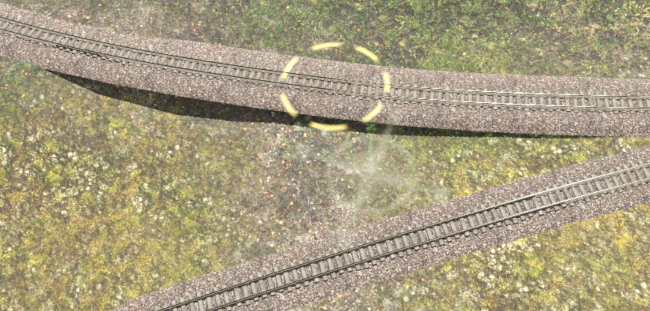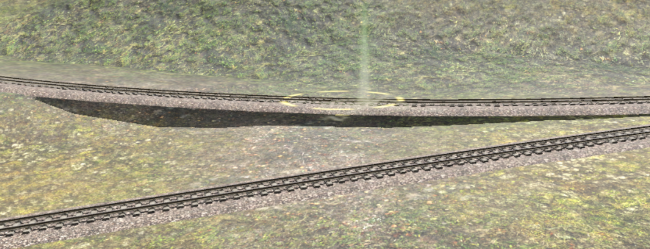coRioGrandeSouthern
Fan of Otto Mears
I have been a purchasing fan of Trainz since I discovered Trainz in 2009. I would be more amenable to investing more in Trainz if the Developers of Trainz spent as much time improving their base tool features as they do on adding new features.
To wit, what I call "The Nuclear Bomb Approach To Grading".


I recently found the Cass Scenic Railroad layout beautifully designed by JClinton and others. If Trainz can have time-sensitive shadowing and lighting and TurFX and rain and snow and other amenities, why can't we have grading that is just as realistic?
If the goal is to create realistic scenery and special effects, wouldn't that by definition include road grading and track alignment in a realistic manner as well? After all, this is a Train Simulation, and trains use road grading and track alignment that does not include huge gaps. Right?
I have encountered issues like the above in EVERY layout I have downloaded since 2009. Will this core tool ever be improved?
Just my two cents worth of frustration. Thank you for reading my rant.
Other than this issue, I do enjoy Trainz and all the hard work and creativity that goes into creating this amazing pastime.
To wit, what I call "The Nuclear Bomb Approach To Grading".


I recently found the Cass Scenic Railroad layout beautifully designed by JClinton and others. If Trainz can have time-sensitive shadowing and lighting and TurFX and rain and snow and other amenities, why can't we have grading that is just as realistic?
If the goal is to create realistic scenery and special effects, wouldn't that by definition include road grading and track alignment in a realistic manner as well? After all, this is a Train Simulation, and trains use road grading and track alignment that does not include huge gaps. Right?
I have encountered issues like the above in EVERY layout I have downloaded since 2009. Will this core tool ever be improved?
Just my two cents worth of frustration. Thank you for reading my rant.
Other than this issue, I do enjoy Trainz and all the hard work and creativity that goes into creating this amazing pastime.
